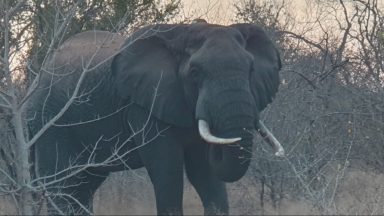It’s all systems go in Maputo National Park’s buffer zone as a dedicated capture team moves into position after the wildlife vets successfully darted elephants from the air using a pneumatic dart gun. This is all part of a translocation operation that will see elephants living in the park’s buffer zone, where they face significant risk of human-wildlife conflict, moved to Zinave National Park.
Translocating 23 of the largest and heaviest land mammals cross country requires seamless teamwork, skill and experience. Luckily, Conservation Solutions’ Kester Vickery lacks none of these attributes, as he and his team have overseen the translocation of thousands of elephants across the world.
Kester explains that to catch the elephants living in the district just outside of Maputo National Park, several large trucks have been brought in to help facilitate the operation. This journey took over seven hours to get them into position. Once the trucks are in position, the first thing that the team does is to make sure that the animals can breathe by pushing them onto their sides and checking that they have not fallen on their trunks. A small twig is also placed inside their trunks to ensure it stays open. While the animal is down, one person is responsible for constantly monitoring the breath rate, which should be between five and eight per minute.
Next, DNA and blood samples are taken from each elephant, which are later examined at a laboratory to determine whether blood-borne parasites are present, as well as provide more information on these elephants’ lineage through gene sequencing.
Collecting data on these animals will contribute to building a solid pool of knowledge on Mozambique’s elephant population. This will help the conservation teams ensure that the national herd is managed in such a way that healthy genetics are distributed throughout the country.
Stay tuned to Peace Parks TV this week as we discover how the elephants settle into their new homes!

